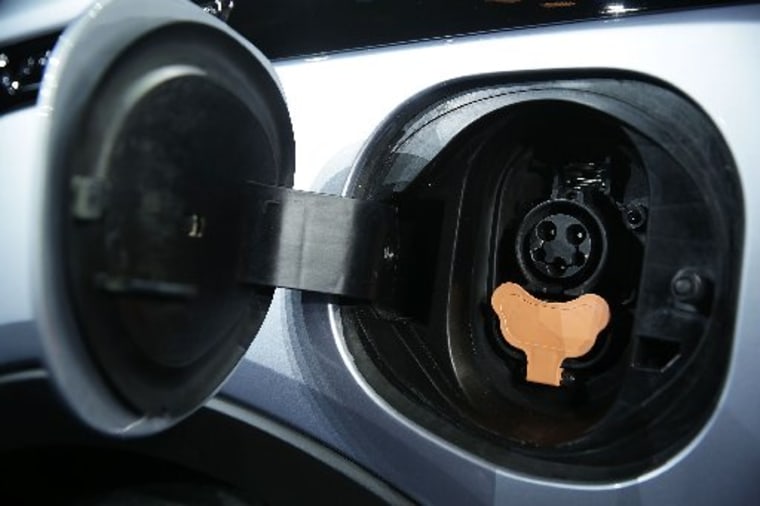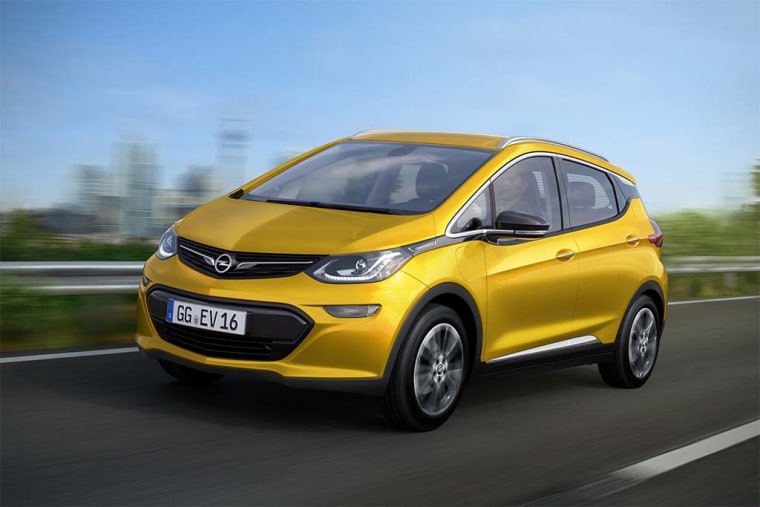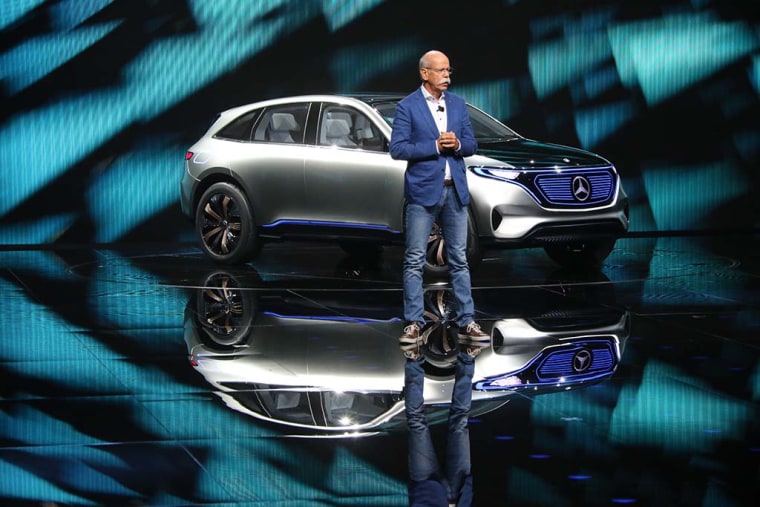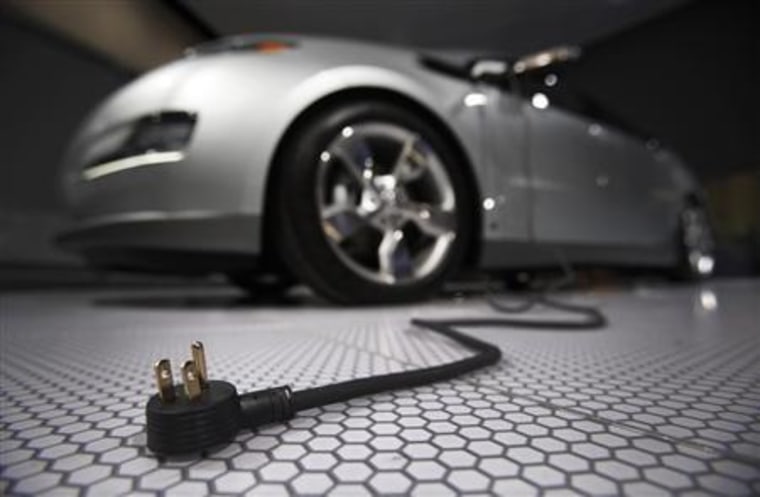Pretty much everywhere you look in the automotive world, manufacturers are plugging into battery drive technology.
One of the key factors driving the push into electrification has been the tough fuel economy mandates adopted by the U.S. Environmental Protection Agency: 54.5 mpg by 2025. But what if those rules, long unpopular with the industry, go away? That’s a question many are starting to ask in the wake of the surprise win by presidential nominee Donald Trump — a man who has called global warming a “hoax."
On an assembly line just north of Detroit, General Motors is just beginning to ramp up production of its new Chevrolet Bolt, the first long-range electric vehicle priced for a mainstream market.
A continent away, Tesla Motors is preparing to follow with its own, affordable battery car, the Model 3, which will cost barely a third as much as the current Tesla Model S P100d electric vehicle.
Daimler recently debuted the completely redesigned Fortwo ED, or Electric Drive; and its new Mercedes-EQ brand, which will be dedicated solely to electric vehicles. Even Ferrari CEO Sergio Marchionne hinted that future models will adopt hybrid technology.

While it is too early to tell what the incoming president’s position on the new Corporate Average Fuel Economy standard will be, candidate Trump had sent signals that he would shake up government energy policy.
He has gone so far as to declare he would take apart the EPA, in fact, “in almost every form.” The agency, during the transition, will be handed over to Myron Ebell, director of the Center for Energy and Environment at the Competitive Enterprise Institute.
There seems no chance the president-elect will heed the unmet call by outgoing President Barack Obama to expand the current $7,500 federal tax credit on qualifying electrified vehicles. That never gained traction in a Republican-controlled Congress, anyway. Whether the new administration might seek to eliminate the existing subsidies is another big question, one that worries many industry officials as they move forward with their battery-car programs.
Tiny Market Share
Subsidies have been critical to the nascent electric vehicle market, especially in the wake of plunging gas prices. All told, all electrified vehicles accounted for less than 3 percent of the U.S. market so far this year, down a point of share since oil went into its slide.
Battery-electric vehicles like the Tesla Model S and Ford Focus Electric have only accounted for about 0.4 percent share this year. The impact of subsidies has been felt in several states, such as Georgia, where incentives have been dropped, sending local sales falling.
Tesla, which has sold more subsidized battery-cars than any other maker in the U.S. has taken a hammering in the stock market since the election, its shares as of Thursday afternoon dipping to one of the lowest levels in the last year. Investors, analysts note, are concerned about the potential impact on next year’s launch of the Model 3, and Tesla’s plan to boost sales to 500,000 by 2018, an almost tenfold increase from 2015.

Not everyone is worried, however. “I don’t think people are choosing electric cars only because of subsidies,” said Annette Winkler, the head of the Smart brand, during a conversation with reporters at the Miami Fortwo ED drive.
Worried about getting off on the wrong foot with the new president, several other automotive executives declined to go on the record about the possible loss of subsidies, but there appeared to be broad concern about the timing, just as manufacturers begin to make a major push into the new market.
General Motors, for example, has heavily promoted the fact that buyers will be able to drive off a dealer lot in the new Chevy Bolt for under $30,000 — $29,995, to be precise, after deducting the federal tax credit from the $37,495 base price.
Greater Range, Greater Performance
That doesn’t mean the new EV would be dead in the water. The new model’s biggest appeal appears to be the fact that it can deliver 238 miles per charge, according to the EPA. That’s nearly triple what an early GM battery-electric vehicle, a version of the Chevrolet Spark subcompact, could achieve. With the exception of Tesla’s Models S and X, the electric vehicles now on the road generally can achieve not much more than 100 miles. In a gas-powered vehicle, that’s about when motorists would look to fill up.

The Tesla Model 3 will deliver more than 200 miles. And many of the other new models in the works are expected to deliver 200 to 300, as well. At the same time, with battery costs to manufacturers plunging by as much as 80 percent since the beginning of the decade, electric vehicle prices, in general are coming down.
Then there’s the issue of performance. Early electrics, such as the Nissan Leaf, put a premium on energy efficiency and range at the expense of performance. But electric motors actually generate tremendous amounts of tire-spinning torque. A Tesla Model S equipped with optional Ludicrous Mode will launch from 0 to 60 in under three seconds, according to the company, as well as independent reviews, making it one of the fastest vehicles on the market.
Proponents, such as Tesla founder and CEO Elon Musk, GM chairman and CEO Mary Barra and Smart’s Winkler frequently refer to the “fun factor” that they believe will become more and more of a selling point for future battery-electric vehicles.
“We have to make our business independent of political decisions,” said Winkler in Miami, which means being less dependent upon government support. At the same time, she acknowledged that “It could take longer” to get sales charged up if the new Trump Administration pulls the plug.
Strong Global Market
One reason that those who support electrification aren’t entirely concerned is that the U.S. is no longer the end-all-be-all market, especially when it comes to new technologies. And, if anything, many other countries are going all-in on battery power. In some cases, they’re using the carrot, in others, the stick.
A number of European countries are weighing the idea of banning all but zero-emission vehicles — which would include hydrogen fuel-cell vehicles, as well as EVs — from major city centers such as Rome and Paris. Germany has laid out tentative plans to ban the internal combustion engine entirely before mid-century. London, meanwhile, exempts such vehicles from the hefty congestion charge to access the central city.
Related: Obama Races to Protect His Legacy From Trump
China, which is the world’s largest new car market also became last year the biggest source of sales for plug-based vehicles — including both battery-electrics and plug-in hybrids. The country is aggressively and directly encouraging manufacturers to electrify. Motorists, meanwhile, get to ignore the monthly registration limits for new vehicles in more than a dozen major cities, including Beijing and Shanghai.
Electric Push and Pull
Not everyone in the U.S. auto industry is upset to see moves that might roll back federal standards that would support electrification. David Cole, director-emeritus of the Center for Automotive Research, in Ann Arbor, Michigan, saw the 54.5 mpg Corporate Average Fuel Economy mandate as a “job-killer.” But Cole also believes that the push to electrification will continue. The industry is too far along, and will still face too many mandates to retreat worldwide.
Nonetheless, the concern is that sales in the U.S. could be hit just as the first of a new generation of more affordable, longer-range, more fun-to-drive models comes to market. Manufacturers are struggling to make the economics work after long losing money on every battery car. A retreat by Washington could make that equation more difficult to put in place.
